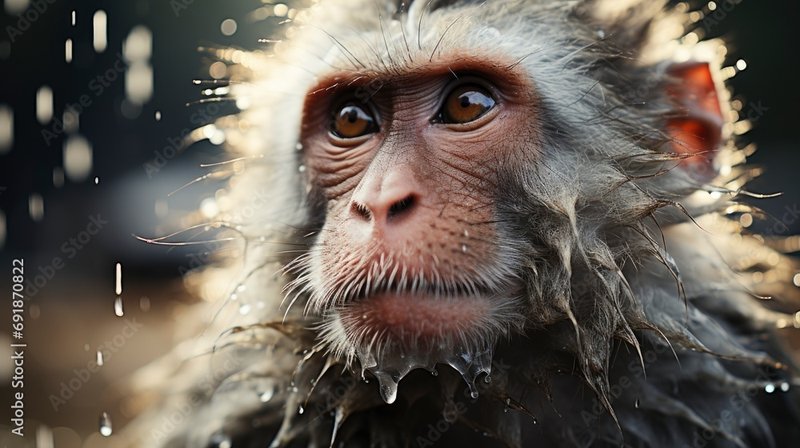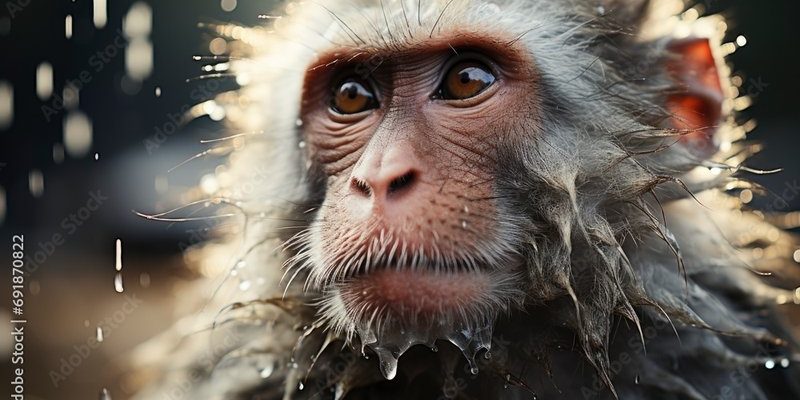
When you think of monkeys, you might picture playful creatures swinging through the trees or grooming each other. Among these delightful animals, Macaca stands out as a diverse genus of Old World monkeys known for their adaptability and engaging social structures. With over 20 species, Macaca can be found in various habitats across Asia and North Africa, showcasing their ability to thrive in different environments. They are not just interesting for their looks and behaviors, but they also play crucial roles in their ecosystems.
So, what makes Macaca monkeys so unique? Imagine a family gathering where everyone has their own personality—some are the jokers, while others are the caregivers. Macaca species often display similar dynamics, forming tight-knit communities where they communicate through various vocalizations and gestures. Their rich social lives and clever adaptations to their surroundings make them a compelling subject for those curious about wildlife.
Physical Characteristics of Macaca
Macaca monkeys exhibit a wide range of physical features that vary from species to species. On average, they are medium-sized monkeys, with adults typically weighing between 10 to 40 pounds. Their body length can range from 16 to 28 inches, while their tails are either short or absent. One feature that’s easily recognizable is their expressive face and relatively large eyes, which convey a range of emotions.
Another interesting aspect of Macaca’s appearance is the variety in their fur. Depending on the species, their coats can be brown, gray, or even black, often with lighter undersides. Some species, like the Japanese macaque, have well-defined seasonal changes in their fur as they grow thicker in colder months to keep warm. Their adaptability is not just physical; they also have strong limbs suited for climbing and foraging, ensuring they can navigate their habitats effectively.
Habitat and Distribution
Macaca monkeys are found in a variety of habitats, ranging from tropical rainforests to mountainous regions and even urban areas. Most species prefer forests where they have ample opportunities for foraging and social activities. For instance, the rhesus macaque is known for its ability to thrive in human-dominated areas, often seen roaming through city streets and parks.
These monkeys are distributed across a vast area, including regions in India, China, Japan, and North Africa. Some species, like the Barbary macaque, are unique for being the only non-human primates found in Europe. This broad distribution helps highlight their adaptability to different climates and landscapes, whether it’s the snowy mountains of Japan or the warm Mediterranean coast.
Diet and Feeding Habits
In the wild, Macaca monkeys are omnivorous, which means they enjoy a varied diet. Their meals typically consist of fruits, seeds, leaves, and even small insects. This dietary flexibility allows them to adjust their feeding habits based on available resources, which is crucial for survival in changing environments. You might find them foraging for juicy fruits high in trees or scrounging for seeds on the ground.
Interestingly, their social structure also influences their feeding behavior. In a troop, dominant members might get first choice of food, while younger monkeys learn the ropes by observing what and how their elders eat. This social learning is vital, as it ensures that younger generations develop the skills needed for foraging. It’s not just about getting food; it’s also about sharing experiences and knowledge.
Social Structure and Behavior
Macaca monkeys have rich social lives that are fascinating to observe. They live in troops that can range from a few individuals to over a hundred, creating complex social structures. Within these groups, there are hierarchies that dictate social interactions, mating rights, and even grooming behaviors. Grooming, in particular, plays a critical role in maintaining relationships and social bonds among troop members.
You might find these monkeys grooming each other in a way that resembles a family reunion—everyone helping each other out and reinforcing friendships. This behavior isn’t merely about hygiene; it also fosters cooperation and reduces tension within the group. Playful antics among younger monkeys further enliven their social life, as they engage in chasing, wrestling, and other playful behaviors that help develop social skills.
Reproduction and Lifespan
When it comes to reproduction, Macaca species generally have a gestation period of approximately 160 to 180 days, depending on the species. Females typically give birth to a single infant, although twins can occur in rare cases. The young are nurtured with great care and attention from their mothers, who teach them essential survival skills during their early months.
The lifespan of Macaca monkeys varies, but they can generally live anywhere from 15 to 30 years in the wild. In captivity, where they are protected from predators and have access to regular food, they can live even longer. This extended lifespan gives them plenty of time to form intricate social bonds, raise their offspring, and adapt to any changes in their environment.
Threats and Conservation
Despite their resilience, Macaca monkeys face numerous threats in the wild. Habitat destruction, primarily due to deforestation and urbanization, poses significant challenges to their survival. Many species are also affected by hunting, either for bushmeat or for the illegal pet trade. As their habitats shrink, their social structures and opportunities for foraging are severely impacted.
Conservation efforts are crucial for the future of Macaca species. Many organizations are working to protect their habitats and raise awareness about the importance of these monkeys in their ecosystems. Protected areas, such as national parks and wildlife reserves, serve as safe havens where they can thrive without the pressures of human encroachment. Education and community involvement are essential components of these efforts, helping to foster a better understanding of the role Macaca plays in nature.
Macaca monkeys are not only a diverse and captivating group of primates but also essential players in their ecosystems. Their unique adaptations, social dynamics, and resilience highlight the wonders of nature. As we continue to learn more about these intriguing creatures, it becomes increasingly important to ensure their protection for future generations to appreciate. Whether you’re a wildlife enthusiast or simply curious about the animal kingdom, understanding Macaca can deepen your appreciation for the complexity of life on Earth.
FAQ
What species are included in the Macaca genus?
The Macaca genus includes over 20 species, with some of the most well-known being the rhesus macaque, Japanese macaque, and the Barbary macaque. Each species exhibits unique characteristics and adaptations to their environments, making them fascinating to study.
How do Macaca monkeys communicate?
Macaca monkeys communicate using a variety of vocalizations, facial expressions, and body language. They can produce different sounds to signal alarm, maintain social bonds, or express emotions. Their communication methods are complex and vital for maintaining social hierarchies.
Are Macaca monkeys aggressive?
While Macaca monkeys can exhibit aggressive behaviors, especially when competing for resources or establishing dominance, they are also capable of forming strong social bonds. Their aggression is often context-dependent, and they usually prioritize social stability within their group.
What role do Macaca monkeys play in their ecosystem?
Macaca monkeys are important seed dispersers. As they eat fruits and travel through their habitats, they help propagate various plant species. This contributes to biodiversity and the overall health of their ecosystems.
How do Macaca monkeys adapt to urban environments?
Some species, like the rhesus macaque, have adapted remarkably well to urban settings. They often scavenge for food and can navigate human environments, developing behaviors that allow them to coexist with people. This flexibility reflects their intelligence and problem-solving skills.
What threats do Macaca monkeys face in the wild?
Macaca species face numerous threats, primarily from habitat destruction caused by deforestation and urban development. Additionally, hunting and illegal pet trading further jeopardize their populations. Conservation efforts are essential to help mitigate these threats.
Can Macaca monkeys live in captivity?
Yes, Macaca monkeys can live in captivity, and many are kept in zoos or sanctuaries. In controlled environments, they often live longer than they would in the wild, benefiting from regular food, veterinary care, and protection from predators. However, it’s important to provide them with enriching environments to promote natural behaviors.
How can I help conserve Macaca species?
You can contribute to the conservation of Macaca through various means, such as supporting wildlife organizations, participating in local conservation efforts, or spreading awareness about the importance of protecting their habitats. Every little bit helps!
What do Macaca monkeys eat in the wild?
In the wild, Macaca monkeys are omnivorous and eat a varied diet consisting of fruits, seeds, leaves, and occasionally small insects. Their dietary flexibility allows them to adapt to different seasonal food availability.
Are there any endangered species of Macaca?
Yes, several species of Macaca are considered endangered or threatened due to habitat loss and other human activities. Conservation programs are focused on protecting these vulnerable species and restoring their habitats to ensure their survival.
What is the lifespan of Macaca monkeys?
Macaca monkeys can live between 15 to 30 years in the wild, depending on the species and environmental conditions. In captivity, where they are protected from threats, they may live even longer, allowing them to experience more life stages and social interactions.

